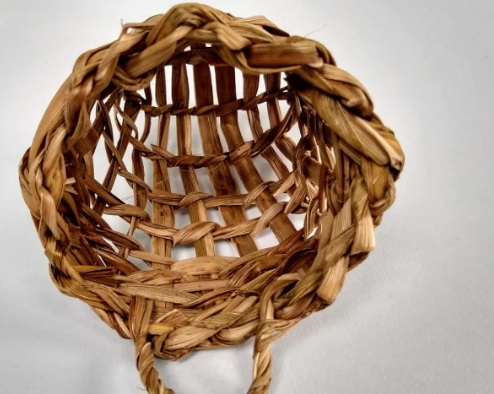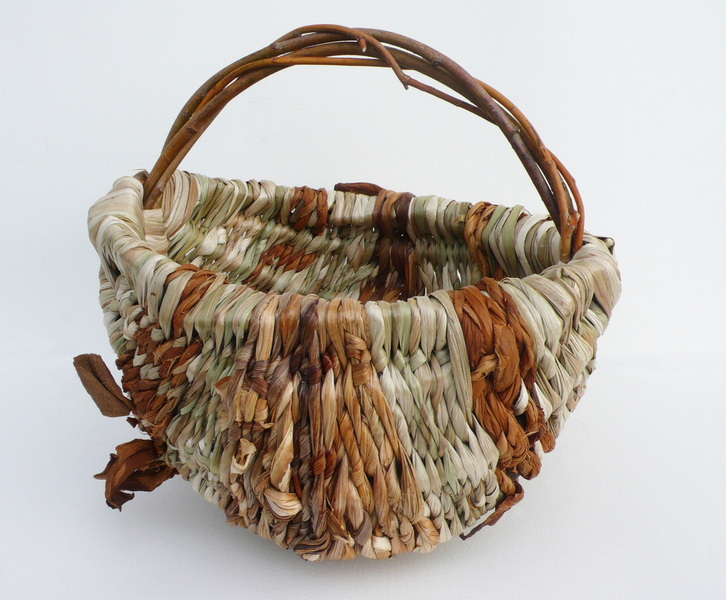Views: 222 Author: Tomorrow Publish Time: 2025-02-21 Origin: Site









Content Menu
● Understanding Navajo Baskets
● Materials Needed for Weaving
● Step-by-Step Guide to Weaving a Navajo Basket
>> Step 1: Prepare Your Materials
● FAQ
>> 1. What materials are traditionally used in Navajo basket weaving?
>> 2. What is the significance of patterns in Navajo baskets?
>> 3. How long does it take to weave a typical Navajo basket?
>> 4. Can anyone learn to weave a Navajo basket?
>> 5. Are there workshops available for learning this craft?
Navajo basket weaving is a time-honored tradition, steeped in history and cultural significance. More than just a craft, it is an art form that has been passed down through generations, connecting the Navajo people to their ancestors and the land they call home. This comprehensive guide will walk you through the process of weaving a Navajo basket, from understanding the materials and tools needed to mastering the basic techniques. Whether you're a seasoned weaver or a complete beginner, this article will provide you with the knowledge and inspiration to create your own beautiful and meaningful Navajo basket.

Navajo baskets are renowned for their intricate designs, vibrant colors, and exceptional craftsmanship. These baskets are not only aesthetically pleasing but also serve practical and ceremonial purposes within the Navajo community. They are used for storing food, carrying water, and participating in traditional ceremonies such as weddings and healing rituals.
The designs woven into Navajo baskets often carry deep symbolic meaning, reflecting the tribe's cosmology, history, and values. Common motifs include:
- The Four Sacred Mountains: Representing the boundaries of the Navajo homeland.
- Water Symbols: Depicting the importance of water to life and sustenance.
- Spiritual Figures: Honoring deities and ancestral spirits.
The act of weaving itself is considered a sacred process, with weavers often offering prayers and blessings as they work. This spiritual connection enhances the basket's significance, making it more than just an object but a vessel of cultural heritage.
To begin your Navajo basket weaving journey, you will need the following materials:
- Sumac: This is the primary material used for the coils and stitching. It is prized for its flexibility, durability, and smooth texture.
- Willow: Often used alongside sumac to provide additional strength. Willow branches can be used for both the foundation rods and decorative elements.
- Yucca: This plant is sometimes incorporated into baskets for its fibrous leaves, which can add color and texture.
- Natural Dyes: If you wish to add color to your basket, consider using natural dyes made from plants, minerals, or insects. Common sources include:
- Indigo: For blue hues.
- Cochineal: For reds.
- Turmeric: For yellows.
- Scissors: Essential for cutting your materials to size.
- Needles: Large-eyed needles suitable for weaving with thicker materials.
- Water: Soaking your materials in water will help keep them pliable during weaving.

Now that you have gathered your materials, let's dive into the step-by-step process of weaving your own Navajo basket.
1. Gather Your Materials: Collect fresh sumac or willow branches from local sources. Ensure they are flexible enough for weaving.
2. Soak Your Materials: Place your coiling material in water for several hours or overnight to make it easier to work with.
3. Prepare Dyes (if using): If you want colored sections in your basket, prepare natural dyes ahead of time by boiling plant materials in water.
1. Start with a Foundation: Take two or three foundation rods (thicker branches) and lay them parallel to each other. This will form the base of your basket.
2. Begin Coiling: Take a piece of soaked sumac or willow and start wrapping it around the foundation rods. Secure it with stitches made from additional coiling material.
3. Form a Circle: Continue wrapping and stitching until you form a circular base about 4-6 inches in diameter.
4. Add Stability: As you create your base, ensure that each stitch is tight enough to hold everything together but not so tight that it restricts flexibility.
1. Add Height: Once your base is complete, begin building up the sides by continuing to wrap your coiling material around the base.
2. Stitching Technique: Use an over-and-under stitch method to secure each layer of coiling material. This creates strength and stability in your basket.
3. Incorporate Patterns: As you weave, you can introduce patterns by alternating colors or changing stitching techniques. For example:
- Use a contrasting color every few rows to create stripes.
- Incorporate spirals or zigzag patterns by varying your stitching direction.
4. Maintain Tension: Keep consistent tension on your stitches as you work; this will help maintain an even shape throughout your basket.
1. Create a Rim: When your basket reaches the desired height (usually around 6-12 inches), finish with a braided rim for added aesthetics.
2. Secure Ends: Tuck any loose ends of coiling material into the body of the basket to prevent unraveling.
3. Drying and Setting: Allow your basket to dry completely before using it or displaying it. You can place it in a cool area away from direct sunlight to avoid warping or fading colors.
To enhance your understanding of Navajo basket weaving, consider watching instructional videos that demonstrate these techniques visually:
1. Practice Patience: Weaving can be intricate work; take your time to enjoy each step without rushing.
2. Experiment with Designs: Don't be afraid to try new patterns or color combinations—this is part of what makes each basket unique!
3. Join a Community Group: Many areas have groups dedicated to traditional crafts where you can learn from experienced weavers and share ideas.
4. Document Your Process: Keep notes or take photos as you weave; this can help track progress and inspire future projects.
5. Respect Cultural Traditions: If you're learning from Indigenous artisans or using traditional methods, be sure to honor their teachings and cultural significance in your work.
Weaving a Navajo basket is not just an artistic endeavor; it is a way to connect with cultural traditions and express creativity while honoring ancestral practices. By following this guide, you can create a beautiful piece that reflects both personal artistry and respect for Navajo heritage. Remember that each basket tells its own story—yours will reflect not only your skill but also your journey as a weaver.

Traditional materials include sumac, willow, and yucca, often dyed with natural colors derived from plants or minerals.
Patterns often symbolize elements of nature and spirituality, reflecting beliefs about life cycles, balance, and harmony within the universe.
The time required varies depending on size and complexity but can range from several hours to several days for intricate designs.
Yes! While traditional techniques may take time to master, anyone can learn the basics with practice and patience.
Many cultural centers and artisans offer workshops on Navajo basket weaving where participants can learn directly from experienced weavers.
1. https://www.bischoffsgallery.com/online-store/a1-apache-basket-information-2619-2620-2621.htm
2. https://www.youtube.com/watch?v=CRv5OOdNfBQ
3. https://study.com/academy/lesson/native-american-basket-weaving-history-techniques.html
4. https://bookdown.org/rexarski/bookdown/section-3.html
5. https://mrs-cook.weebly.com/navajo-loom-weaving.html
6. https://www.youtube.com/watch?v=ruAHkf0YxNQ
7. https://nhmu.utah.edu/sites/default/files/attachments/The%20Navajo%20Ceremonial%20Basket%20Interpretations.pdf
8. https://blog.csdn.net/Angelina_Jolie/article/details/139147709
9. https://www.youtube.com/watch?v=LmRaoH4V8mw
10. https://www.visitutah.com/articles/the-navajo-basketmakers
11. https://www.sohu.com/a/388496252_653124
12. https://blog.csdn.net/u012549626/article/details/127719965